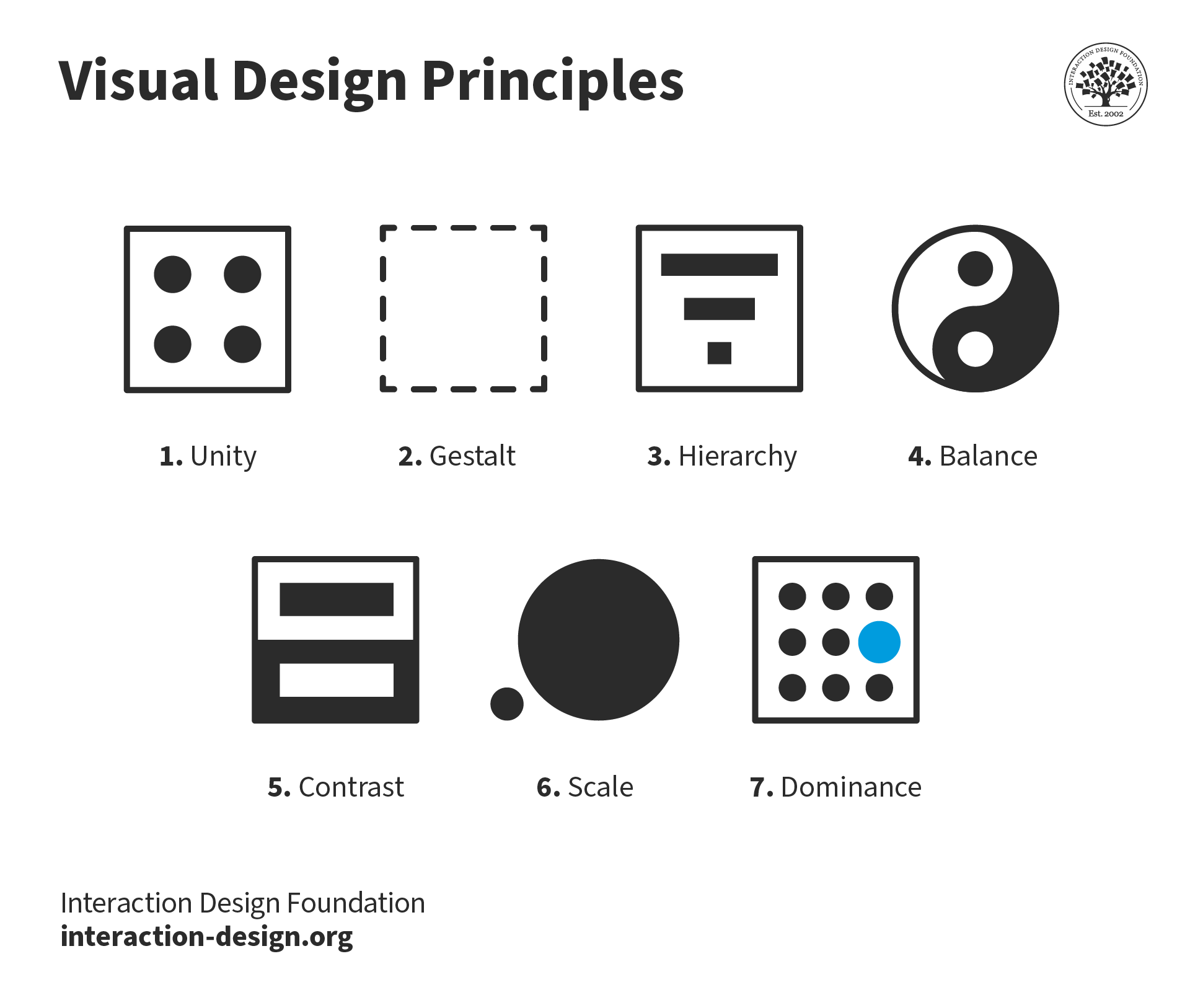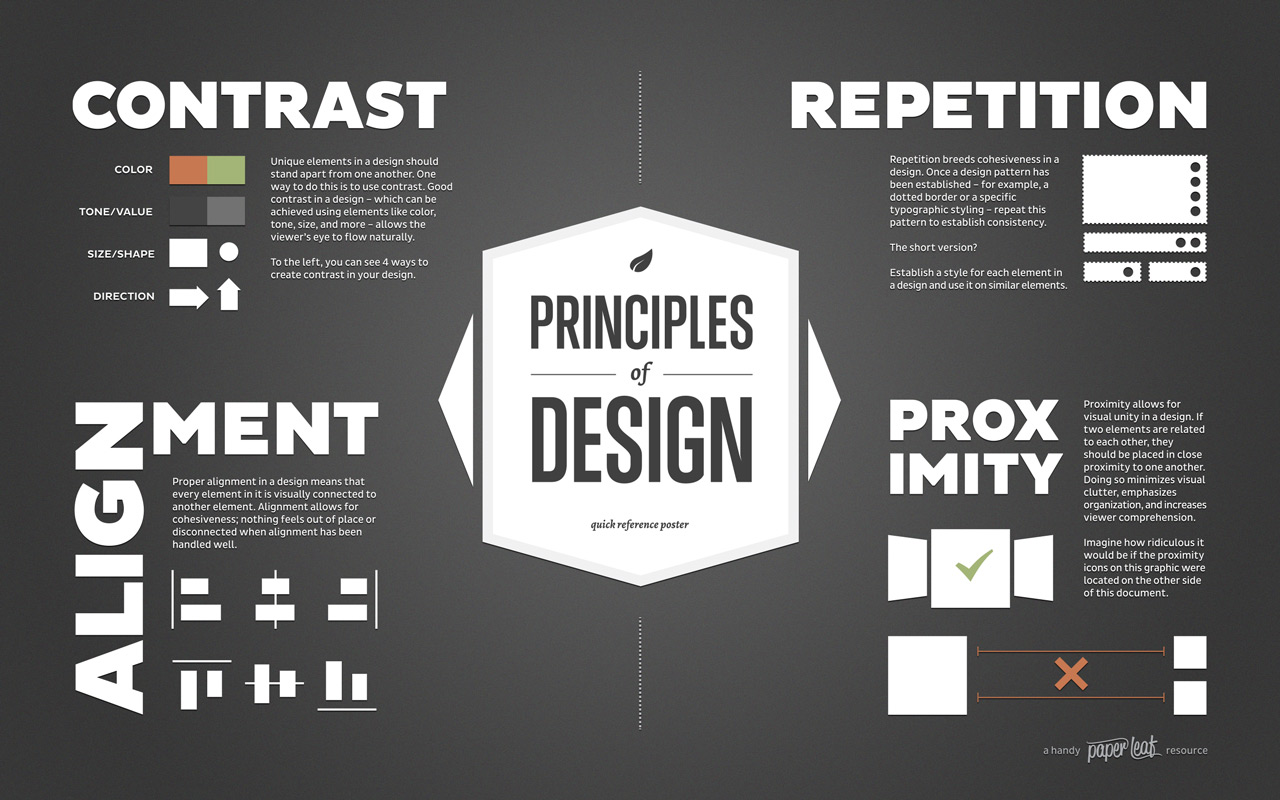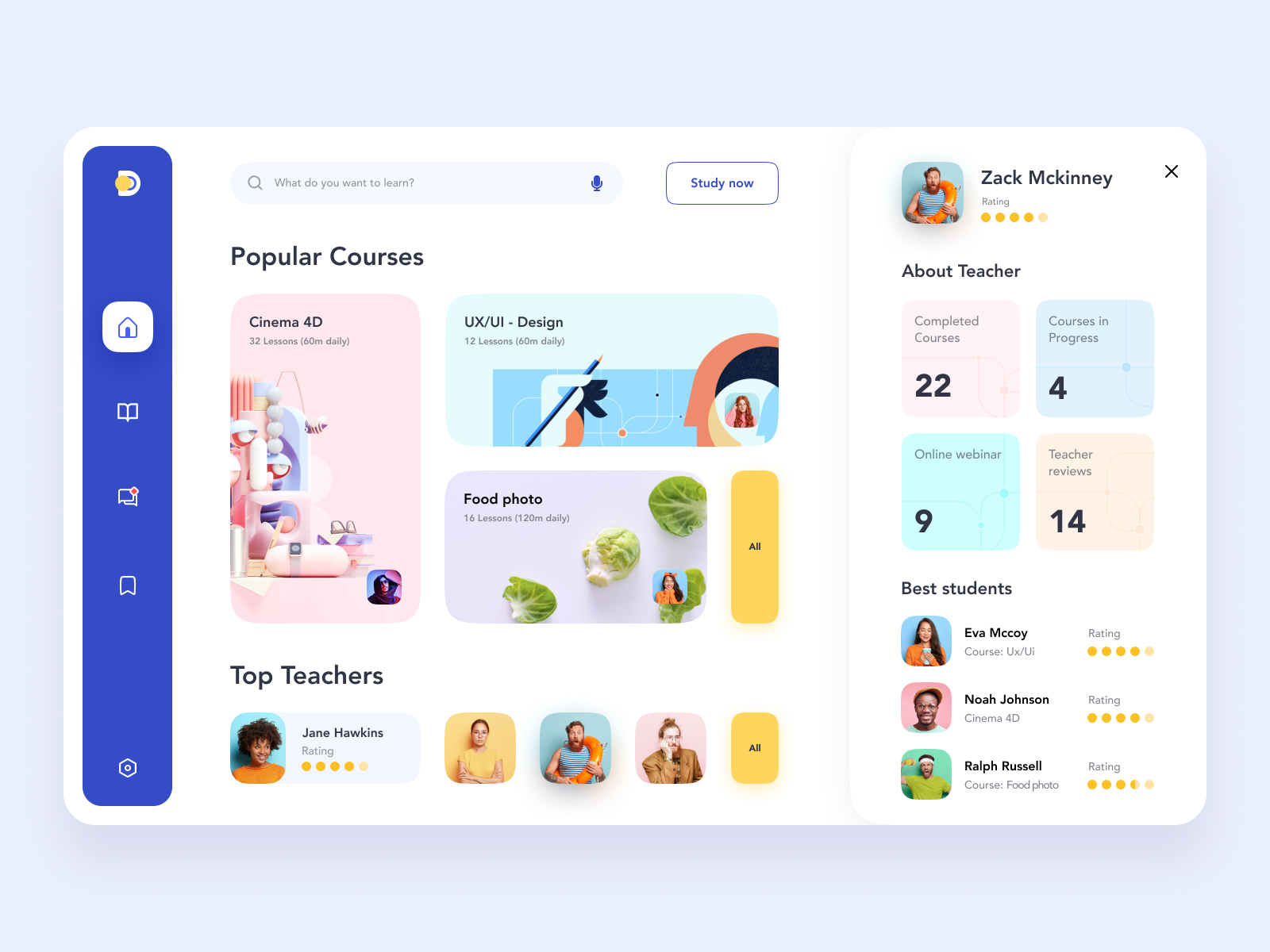Table Of Content

To organise the text, we can create visual groups simply by adding space before and after each heading, and by adding space to the first line of each paragraph. Where there is a lot of content, space is an important tool for breaking it up, organising it, and making it easier to absorb. And going back to the first principle in this list, spacing is what allows us to create visual groups. Similarly, the eye will group together elements that share characteristics like shape, size, and colour. Some designers follow these principles without even realizing they’re doing it. Other times, a designer can’t quite put their finger on why a design isn’t working, but when they consult these principles they can often find the solution.
References & Where to Learn More
The principles of design are the rules a designer follows to have a composition that’s just right. They help you create artwork that’s not only beautiful and eye-catching but also correct in ways professionals can see and viewers feel. It’s entirely possible to create a good design without a thorough understanding of these elements and principles of design. However, it’s typically done by “designer’s intuition” and may take a lot of trial and error in order to create something that actually looks good and creates an optimal user experience. Designers could save a lot of time and energy by practicing the principles we have discussed until they become second-nature.
Implementing the Principles of Design
See What's Coming in Visual Studio 2022 UI Design Refresh - Visual Studio Magazine
See What's Coming in Visual Studio 2022 UI Design Refresh.
Posted: Thu, 11 May 2023 07:00:00 GMT [source]
White space, or negative space, gives your composition room to breathe and helps certain elements stand out. And most of the time, it makes your work more successful by highlighting the important information and your main design element. To apply scale effectively, adjust the size of elements to reflect their importance within the interface. Make key elements like call-to-action buttons larger to draw attention, and use a smaller scale for less critical information, ensuring a clear visual order that guides users naturally. Visual design in UX is a symphony of elements working together—scale, hierarchy, balance, contrast, and the Gestalt principles all play their parts.
Principle 2: Visual hierarchy
In the following sections, we’ll dive deep into each principle, equipping you with the know-how to apply these tools effectively in your UX visual design principles, projects. Here’s another example of a design that uses multiple principles effectively. The large header creates emphasis on that particular text, while the smaller type appears less important due to proportion. The shapes in the background create a sense of random rhythm and movement, while the similar color scheme between them creates unity.
A logo should be legible both in tiny dimensions as well as from a distance on a screen. Some projects have their specified scale designed for a certain medium or site, while some others need to work in various sizes designed for reproduction in multiple scales. In human-centered design, designers and users co-create websites that add value for everyone. When you fire up an editing suite or put pen to paper, each visual design you use creates unity among disparate elements or creatively upends that unity to encourage an action. Every design seeks to either create a sense of unity among disparate elements, or creatively break that unity to encourage a particular action. With the right principles, tools, and tips for graphic design, you can create compositions that are unique, catchy, and, of course, right.
11 Web Design Principles You Need To Know - Built In
11 Web Design Principles You Need To Know.
Posted: Mon, 23 Nov 2020 08:00:00 GMT [source]

A point is basically the beginning of “something” in “nothing”. It forces the mind to think upon its position and gives something to build upon in both imagination and space. Some abstract points in a group can provoke human imagination to link it with familiar shapes or forms. From typography to communication, learn the skills web designers should have. Products' pricing pages are terrific locations for reification. Web designers can make one column stand out from the rest of the pricing table through color or size.
Scale can also help define the visual hierarchy, so incorporate various scales for your different design elements. A general rule of thumb is to include small, medium, and large components in the design. Moreover, a well-designed course engages the learner and boosts comprehension and retention.
We do need, however, to introduce some variety in our work in order to strike a balance between a boring and a chaotic design. We use colours in visual design to convey emotions in and add variety and interest to our designs, separate distinct areas of a page, and differentiate our work from the competition. We design websites that can make use of grid to achieve a sense of unity, since elements are organized in a grid will follow an orderly arrangement. We do need, however, to introduce some variety in our work to strike a balance between a dynamic and a chaotic design.
Along with each likert scale choice in Helio, participants were asked to prove their level of comprehension by explaining the offer themselves. Many participants, like the Architecture professional above, used the terms AEC and CRM in their responses, showing a firm understanding of the platform’s target audience and purpose. In the film scene, there is contrast between the many horizontal and vertical lines. This is also an example of the seventh principle in this list, repetition. Alignment is about how different visual elements line up with one another (and about how they don’t).
In web design, using grids and alignment helps the overall design look consistent and harmonious. Harmony creates a feeling of unity and completeness in a design. Since the purpose of design is to visually communicate a message, harmony is essential. When used strategically, scale can create hierarchy, balance, or emphasis. In these poster designs, space is used to separate different shapes and sections of text.
Radial balance will always lead the eye to the center of the composition. A layout with a good visual hierarchy will be easily understood by your users. Following these 5 visual-design principles can drive engagement and increase usability.
On a “cancel subscription” page, the “cancel” button may be small and grey to blend into the background, while the “keep subscription” button is vibrant and colorful. In the realm of design, the invariance principle is a powerful tool. Introduce a different element in an otherwise homogenous group of elements to draw the eye and invite clicks. This need comes from seeking safety, but it has fascinating implications for visual design. The brain fixates on one way of seeing something and excludes possible alternatives. You either see Brutalism as an architectural innovation or a scourge, a blight on an otherwise pristine cityscape.

No comments:
Post a Comment